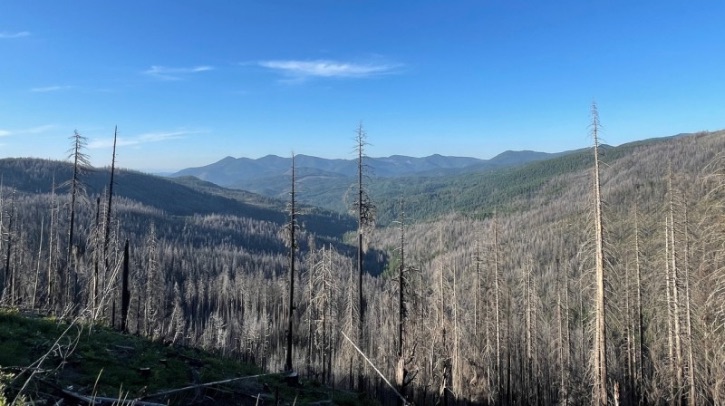Researchers from Northern Arizona University (NAU) have used NASA’s spaceborne lidar to discover that ladder fuels – which are shrubs, small trees and lower branches – may be the most important factor in predicting wildfire severity even in extreme conditions. Further, management efforts that focus on ladder fuels can help reduce the size and severity of wildfires in the US Southwest no matter what the weather is doing.
Chris Hakkenberg, an assistant research professor in the School of Informatics, Computing and Cyber Systems (SICCS) at NAU, was the lead author of the study. He collaborated with researchers in California as well as senior research scientist Patrick Burns and and Regents professor Scott Goetz, both at NAU.
NASA’s Global Ecosystem Dynamics Investigation lidar
NASA’s spaceborne lidar Global Ecosystem Dynamics Investigation (GEDI) was used in the study to characterize pre-fire fuel for 42 large California fires from 2019-2021. According to the researchers, it was uniquely able to peer into forests, providing consistent data on fuel structure for large areas and over multiple years. With this data, the team was able to determine that, among all measures of forest fuel – such as canopy height or volume – the presence of ladder fuels was the single most consistent determinant of high-severity fire. Likewise, fewer ladder fuels were associated with reduced burn severity.
The researchers highlight that, as a result of this discovery, land and fire managers can use satellite data on weather and fuels well before a fire to find out which areas are at greatest risk and how to reduce that risk by working with managers on the ground to implement pre-fire ladder fuel treatments and guide suppression efforts.
Limitations and future implications
However, the team underlines that ladder fuels were an exception to the rule and that forest fuels are usually not a great predictor of severity, especially when extreme weather is part of the equation.
“This research uses large-scale satellite data to show that if fire weather is extreme and there’s ignition, let’s say from burning embers blown by the wind, a fire is more likely to result in a high severity burn due to factors like low humidity and wind speed versus the sheer fuel volumes,” commented Hakkenberg.
“That said, we were surprised to find a critical exception to this trend – specifically with ladder fuels. Put simply, even in extreme weather conditions, forests with fewer ladder fuels tended to experience less severe fires.”
Overall, the scientists concluded that the need to develop ways to adapt to a new climate normal across landscapes with historically dense forest fuels is great, but focusing management on ladder fuels is one promising approach.
“While wildfires are a natural component of Western USA fire-adapted ecosystems, this trend from mixed-severity toward large, high-severity fires has resulted in wildfire regimes that are more destructive to forest ecosystems and more dangerous to human communities,” Hakkenberg added. “These high-severity fires also run the risk of altering our forestlands to a new normal – converting them to shrub or grasslands where trees are unable to establish due to high-intensity fire’s impact on microclimate, soil conditions and the seed bank.”
In related news, NASA recently awarded a two-year, US$1.23m grant to a team led by Penn State College of Information Sciences and Technology (IST) to improve atmosphere and ocean forecasts by incorporating artificial intelligence (AI) and satellite data into current forecasting models. Click here to read the full story.



